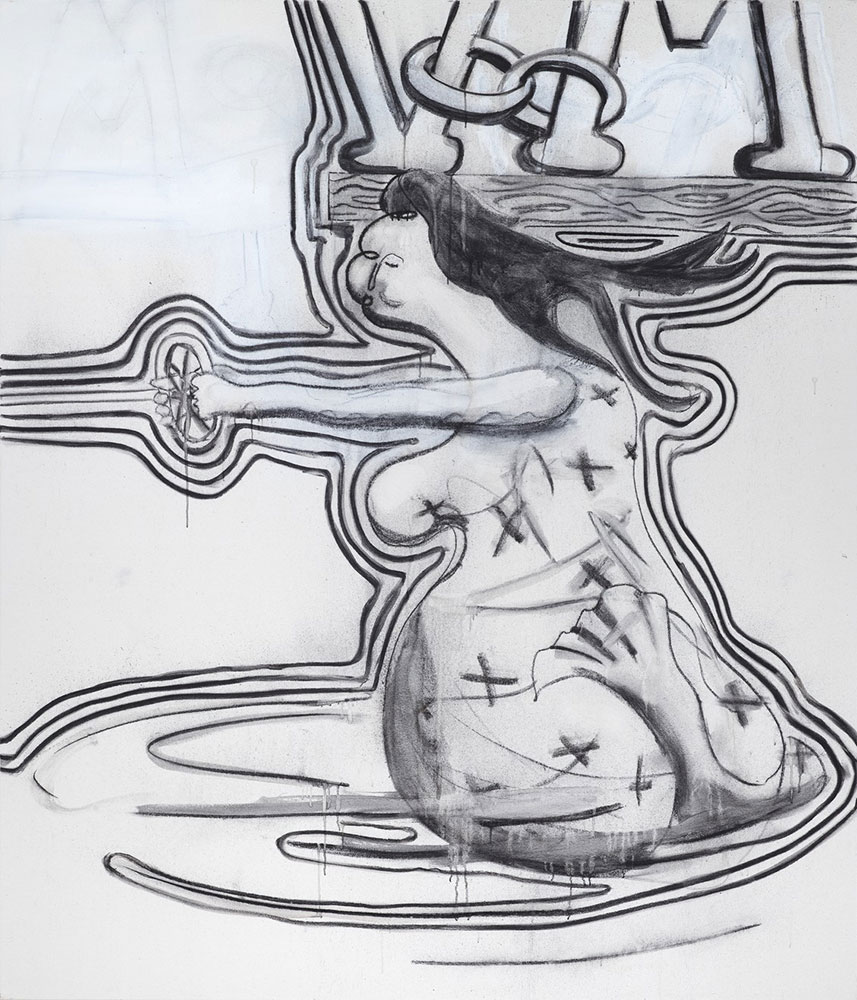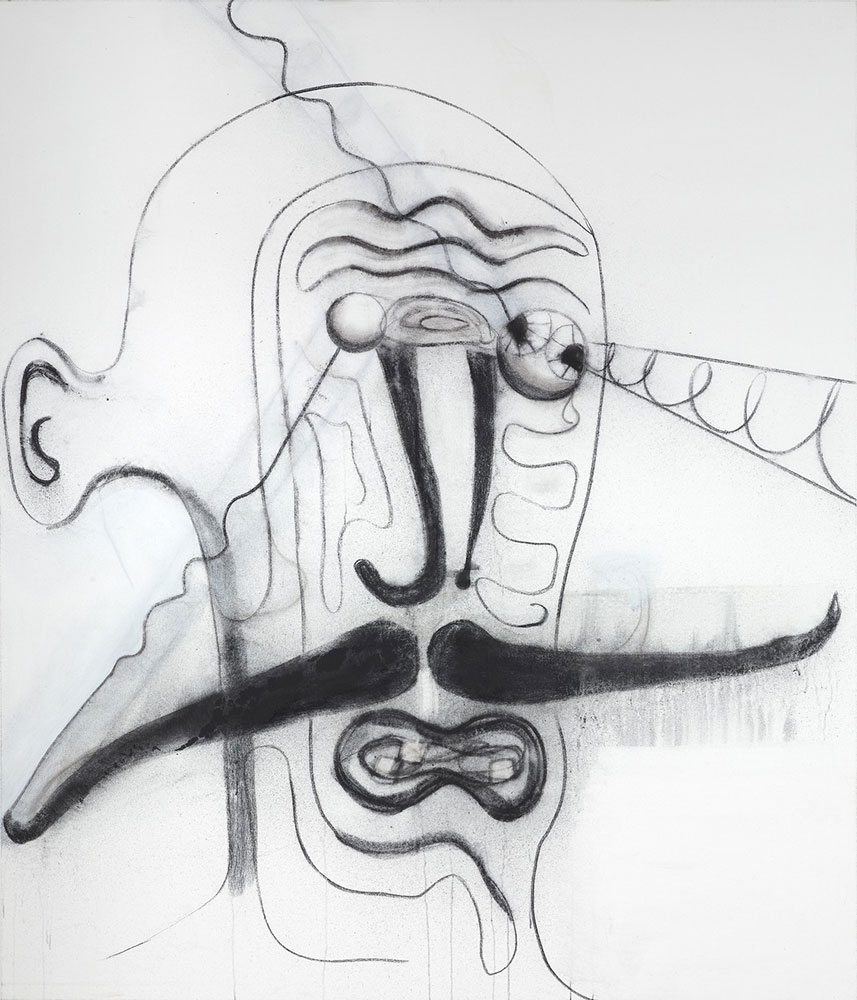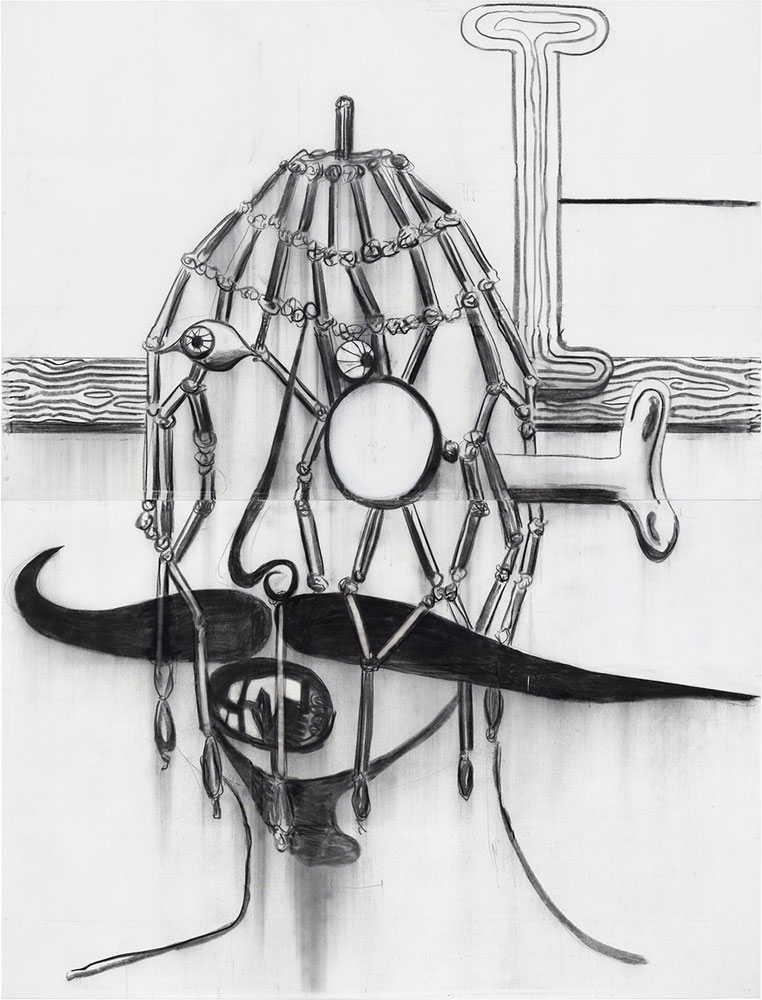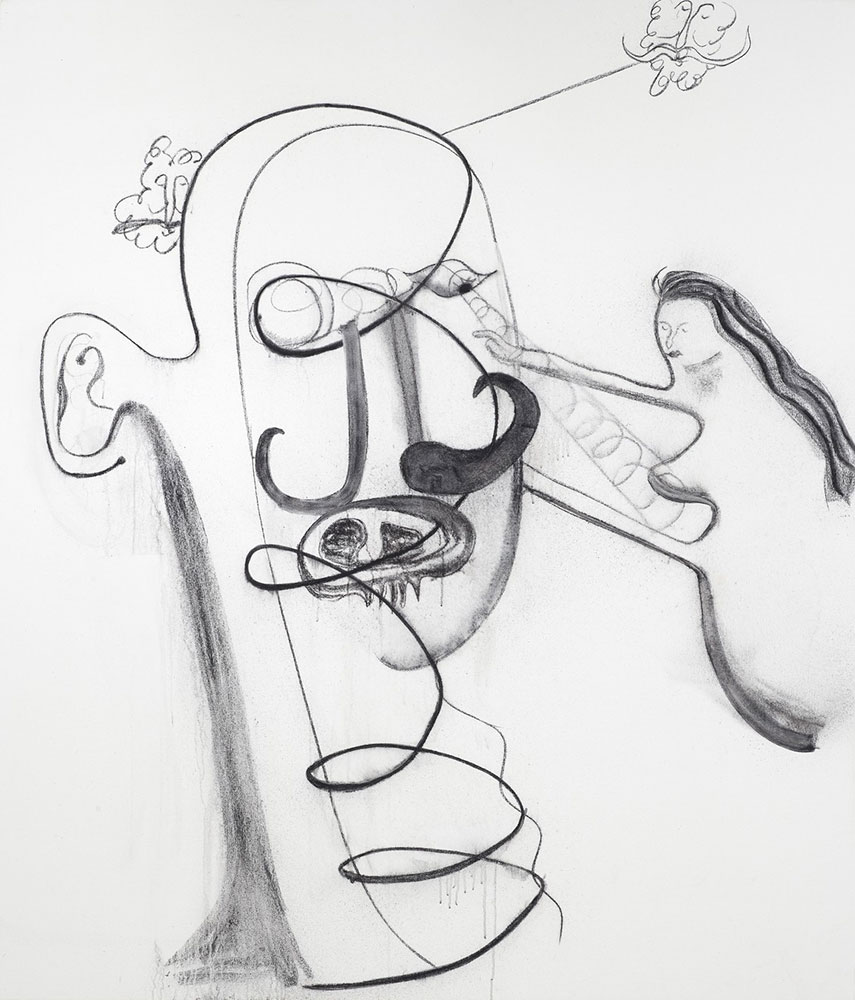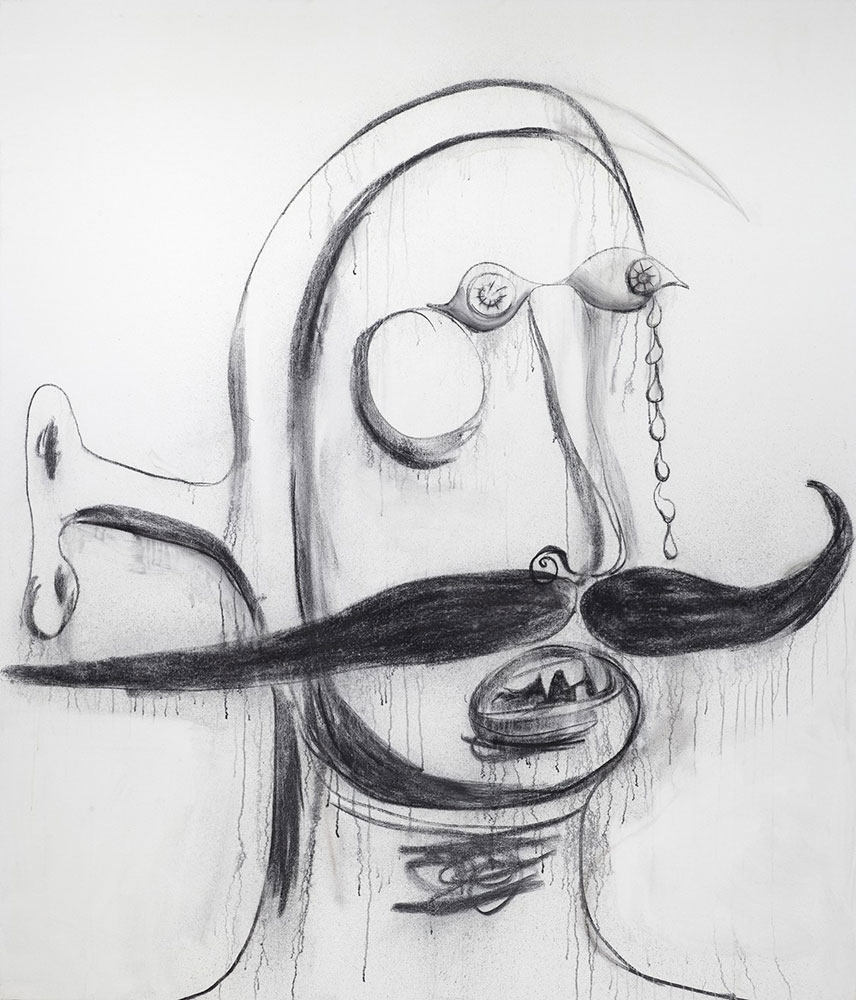ART CITIES:Los Angeles-Albert Oehlen, Part II
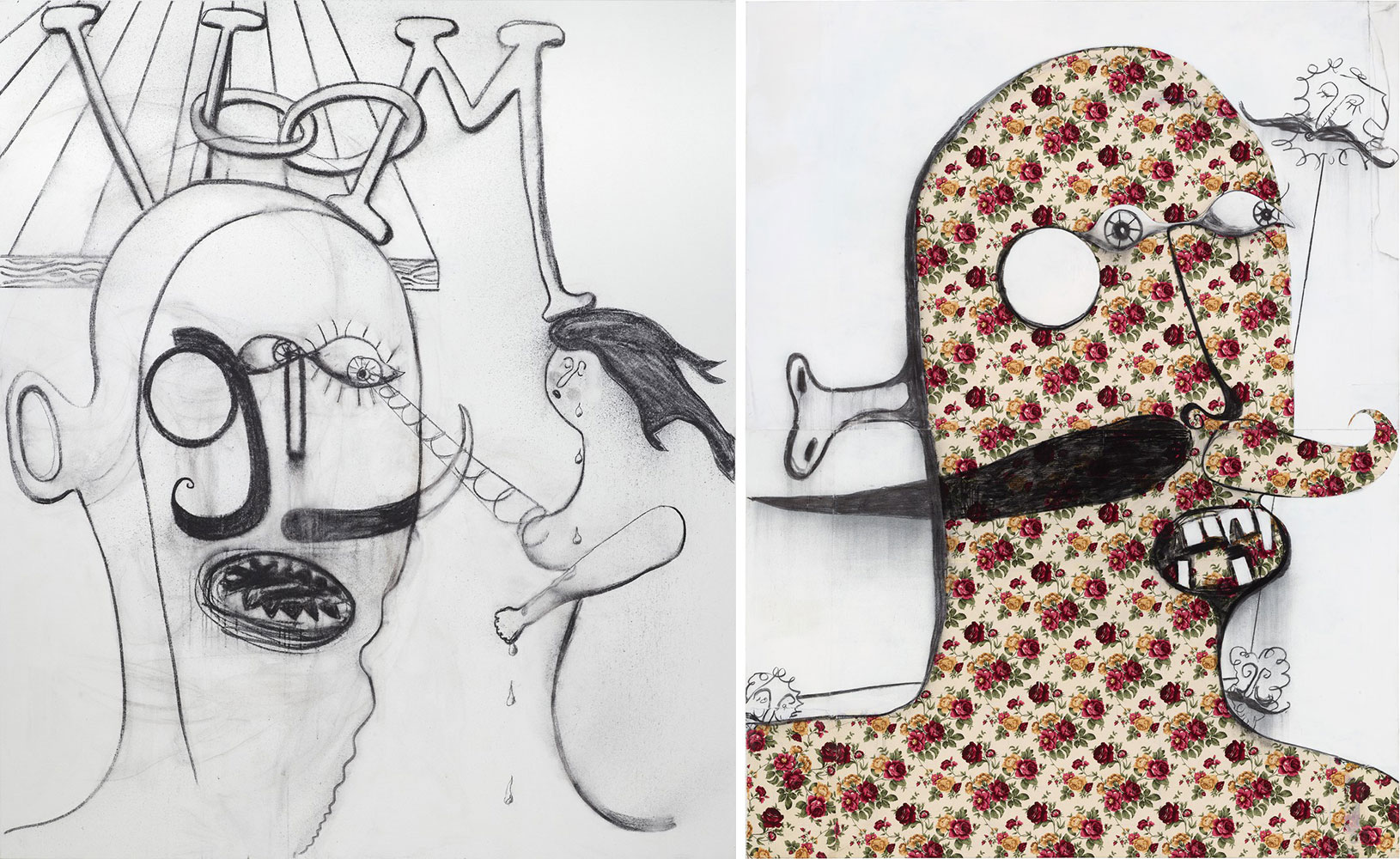 One of the most respected artists today, Albert Oehlen constantly questions the methods and means of painting to raise a sense of awareness of the medium, which he aims to reinvent and to reshape, always in opposition to traditional hierarchies. Albert Oehlen has been continually colliding various styles, orders or mediums since the 80’s, expanding the notion of painting to “what he wants to see”.
One of the most respected artists today, Albert Oehlen constantly questions the methods and means of painting to raise a sense of awareness of the medium, which he aims to reinvent and to reshape, always in opposition to traditional hierarchies. Albert Oehlen has been continually colliding various styles, orders or mediums since the 80’s, expanding the notion of painting to “what he wants to see”.
By Dimitris Lempesis
Photo: Gagosian Archive
This is the first time that Albert Oehlen’s provocative and personal response to the Rothko Chapel in Houston, “Tramonto Spaventoso” (2019–20), is being exhibited in its entirety. The paintings are installed in a custom-built octagonal structure in the Grand Theater Gallery of the Marciano Art Foundation, reflecting the layout of the original chapel. Oehlen uses abstract, figurative, and collaged elements, often applying self-imposed strategic constraints, to disrupt the histories and conventions of modern painting. While championing self-consciously “bad” painting characterized by crude drawing and jarring coloration, he infuses expressive gesture with Surrealist attitude, openly disparaging the quest for reliable form and stable meaning. In the eight large-scale paintings that constitute the Tramonto Spaventoso project, Oehlen variously interprets and dramatically transforms John Graham’s “Tramonto Spaventoso” (Terrifying Sunset, 1940–49), a painting by the Russian-born American modernist that Oehlen discovered in the 1990s and has been fascinated with ever since. Reworking motifs from Graham’s original, including a mermaid and a man sporting a monocle and a Daliesque handlebar moustache, Oehlen improvises on his source. In explosive abstractions in acrylic and spray paint, he combines graphic brushstrokes, deliberate “painterly” drips, surprising color combinations, and textural obfuscations to test the limits of coherence and legibility. Oehlen’s paintings are characteristically disparate, challenging the viewer with unexpected shifts in aesthetic and thematic direction.
Albert Oehlen, is a German painter and installation-artist. In Hamburg he studied at the Hochschule für Bildende Künste where Sigmar Polke was his teacher. Later he begins working with notorious German artists from Cologne such as Martin Kippenberger, Jörg Immendorff and his brother Markus Oehlen. He is considered one of the representatives of the German neo-expressionism and the new savages that gained attention with their subjective and life-affirmative type of painting. Willem de Kooning being his inspiration Oehlen sees his oeuvre as “post-abstract“. Characteristic of Oehlen’s working method are groups of works, for each of which he selects a formal problem and plays it out experimentally. From 1988 to 1994, Oehlen devoted himself to “Bionist painting”, in which he painted computer-generated images. At the same time, he searches in his “tree pictures” – like Mondrian once did – for the borderline where figuration and abstraction fall into each other. Later Oehlen intensified his painterly research with increasingly bright colors by bringing together in a single picture the most diverse methods he used in earlier groups of works. Oehlen explains his style in this way: “Because we now refuse to deny the direct dependence and responsibility of art vis-à-vis reality, and on the other hand see no chance for art as we know it to have an effect, there is only one possibility left: failure”. Oehlen finds himself in a trap, and rather than do nothing, he opts to paint his impressions of the trap itself. One such trap for painting is the mechanical reproduction of image, which, according to some theorists, drains images of their personal and social content. In this theoretical world, “Kaleidoscope” (1994) makes no claim for fixed meaning and mixes painting with silkscreen. The marks on the canvas place outmoded dot matrix printing methods and gibberish computer characters together with an unmoored automatic drawing. The result is an intentionally confused field that pays homage to neither expressive nor mechanical processes. “Abstand” (2006) continues Oehlen’s iconoclastic motives, pitting techniques of painting advanced in the 1940s and 50s seemingly against one another. In the work, large tectonic areas of imagery and color are subverted by figurative and gestural elements noisily competing for compositional dominance. By using opposed frameworks, not only does Oehlen disrupt standards of taste but he also takes on the pretensions of the history of painting.
Photo: Left & Right: Albert Oehlen, Tramonto Spaventoso (Detail), 2019–20, Installation of eight paintings, Acrylic and spray paint on canvas, © Albert Oehlen. Photo: Simon Vogel, Courtesy the artist and Gagosian
Info: Gagosian, Marciano Art Foundation, 4357 Wilshire Boulevard, Los Angeles, USA, Duration: 10/6-24/7/2021, Days & Hours: Tue-Sat 11:00-17:00 (by appointment only, book here), https://gagosian.com
